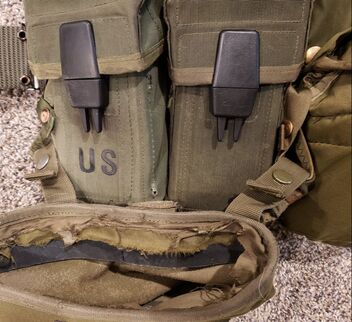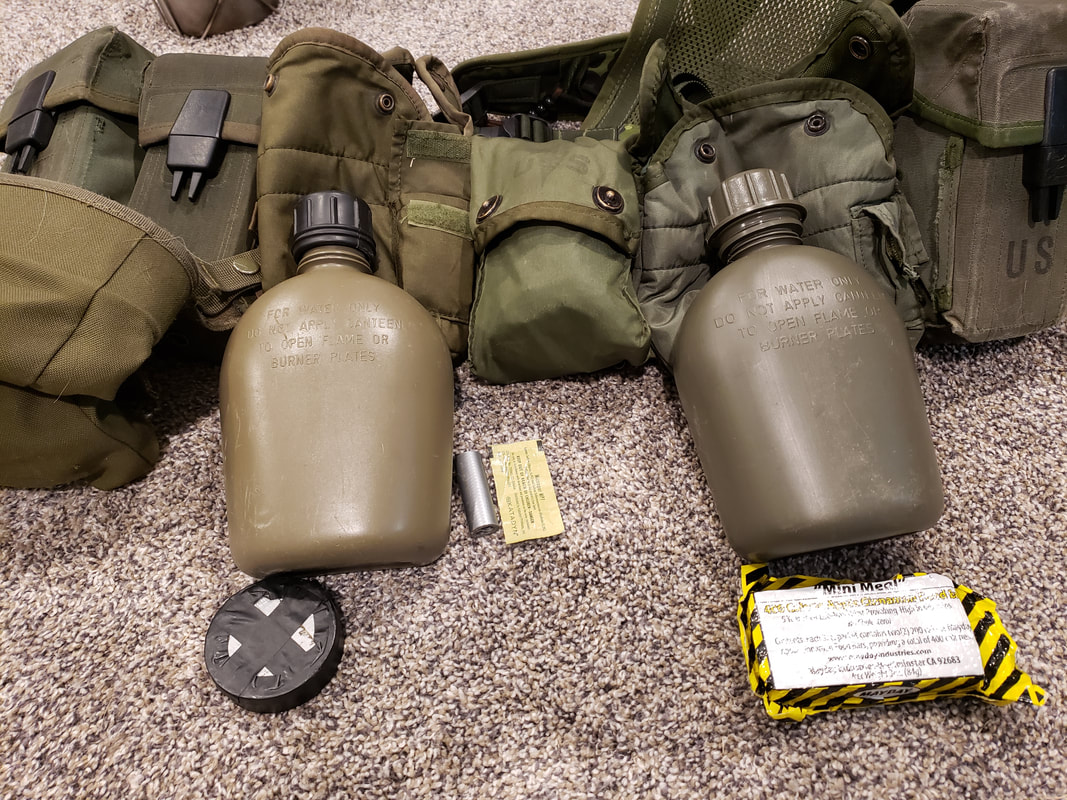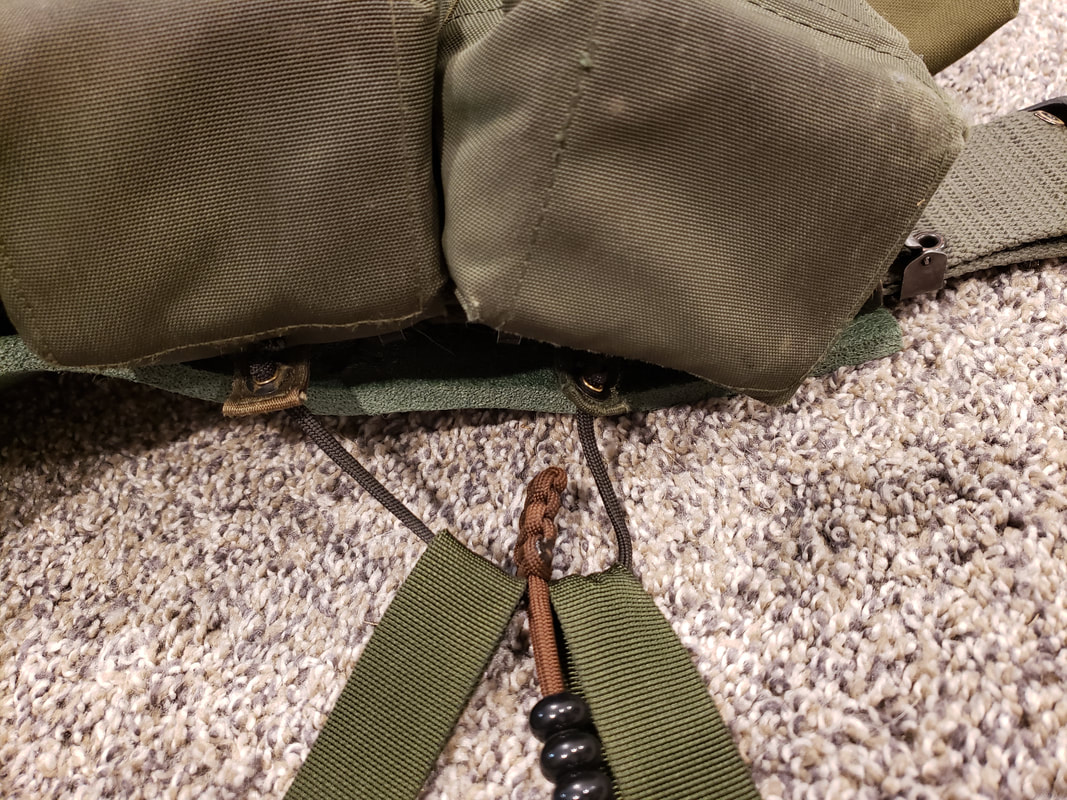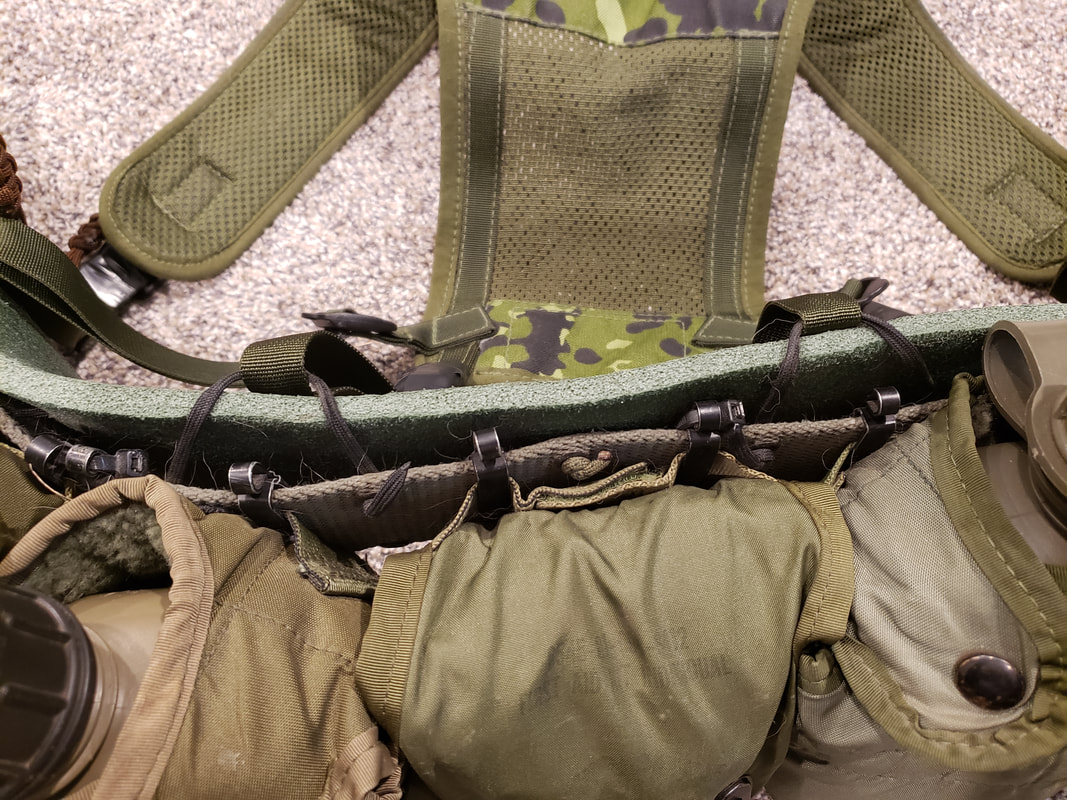|
The ALICE LCE system was developed around the lessons learned in Vietnam and prior. All the gear, for the most part, is made of nylon which is lightweight but incredibly durable. It has been used and abused and carries with it a controversial record. Though modular, it is limited to the belt and not all components worked out all that well for carrying heavier loads, such as the Y-Harness system. Some military units had mandated set ups, which gave soldiers and Marines a further dislike of the system. For my purposes, I am not only unrestricted on how I set up the ALICE system, but I am also inspired by the functionality of the British PLCE. By blending ALICE pouches on the US web belt and utilizing a Danish Yoke, I have what I feel is the best fighting system for conventional combat. AMMUNITION COMPONENT I would venture to say that how you deliver ammo to the fight and facilitate feeding the firearm can be a pivotal part of combat. Modern warfare still revolves around using firearms to impose your will against the enemy, thereby making the position and placement of your ammo vital in a fight. The principles to follow are: Accessibility from all positions, retention during movement, and they need to be silenced. Inspired by the standard layout of the British PLCE system, I have two ALICE mag pouches on each side, for a grand loadout of either 160 .308 (I can only fit 20rd mags in ALICE pouches) or 360 5.56/.223. This means I effectively have the equivalent of a full combat load on my support side, and my firing side. The ammo pouches go no more forward than my hips, which allows me to be in the prone with zero restriction. This also allows me to reload while keeping my belly button touching the ground. I use the grenade flaps on the support side to attach a modified Condor dump pouch, because magazines are not disposable nor are they cheap. I have duct taped waterproofed cardboard onto the rigid internal nylon panels to keep the mags in their place, even after extracting a couple. I had a problem with multiple mags coming out during a prone reload due to magazine friction, and this isometric tension from the carboard fixed it. It also reduces the overall noise made by movement and bumping. I recommend completely wrapping the carboard in fiber reinforced packing tape, since carboard gets brittle when wet. The last thing you need is the cardboard flaking away and possibly preventing magazine insertion. I hadn't yet waterproofed my cardboard in the below picture because I was seeing how long dry cardboard would last in training. When carrying .308 mags, I typically will have to utilize triangle bandages and gauze packs to raise the mags up and provide tension and noise dampening during movement. In an emergency, these medical items credit your IFAK and can serve to pack wounds, make pressure dressings, splints, and improvised TQs. Don’t forget that the wrappers can also serve as occlusive dressings for sucking chest wounds. BOOM, you are TCCC-ready. These mag pouch tricks for silencing and adding medical practicality are SF tricks from Vietnam. WATER COMPONENT Directly behind the ammo I have canteen pouches. The support/left side canteen shares the pouch with camo paint, which is an essential item. The firing/right side canteen hosts a Mayday ration for use with my canteen. Canteens may be seen as generally old school and outdated, but not when it comes to sustained combat in woodland climates, which is the point of this rig. Keep in mind that the canteens and the ration are strictly for when I do not have another source of food water available, such as my pack/ruck. To minimize noise, resist drinking until you are sure that you can guzzle the whole canteen. The Mayday ration comes as two squares of 200 calories each and I recommend one square be gobbled down with each canteen so you replenish electrolytes and vitamins. Water without food dilutes electrolytes, especially when carrying a combat load. Be smart and depart from the old military concept of constant water intake. It causes more problems than it solves. Science and current studies proved this years ago, so it is time to catch up if you haven’t by now. It is the little things like this that will make you an asset or a liability. SELF-AID KIT At the very back of the belt, I have an ALICE IFAK pouch that utilizes a modern IFAK insert. Yes, I can easily reach the kit with either hand, so not to worry. I cut a piece of boot lace to serve as a pull handle. The handle is wrapped around the nipples of the IFAK and then the flap is closed. The IFAK pouch is on of the best ways I can think of to carry medical supplies as it is light and opens very easily. The components of the IFAK are for me to provide self-aid. The basic necessities for combat care are in there. Medical sustainment items can and should be stored in a pack for higher levels or sustained care in the field. Just keep in mind that things like splints and bandages can be improvised. Just because you have a pack doesn’t mean you need to load it up with stuff. Improvise where you can to save space, weight, and even money. ADD-ONS AND EXTRAS Between the support side canteen and ammo pouches, I have an ALICE pistol magazine pouch that hosts a Vortex 10x monocular. This is for visual recon, which I am sure goes without saying. On top of the firing side ammo pouches, I have a Cold Steel Kobun strapped to the 550 cord that secures the Danish yoke to the ammo pouches. This is a defensive knife only and serves no utility. It is merely held in by sheath friction but it is light, and stays in an optimal location for easy reaching by either hand. Lastly, I have my pace counting beads tensioned and anchored by the 550 cord that the left front strap of the yoke is attached to. For comfort, I use a piece of old military sleeping mat and 550 cord to secure it to the web belt. Without it, the belt shifted and pouches tended to grind against the body. The good thing about this modification is the foam doesn’t absorb water and it allows you to tighten the belt just enough to prevent shifting when moving. This can be an issue with modern belts, unless they utilize a Velcro retention system. Keep in mind that when moving, Velcro will be loud if pouches are being pulled/pushed. Also, the modern belt systems tend to take and hold water, which will lessen the hold Velcro has and increase wear. DANISH YOKE SYSTEM Compared to the three points of contact on the ALICE Y-Harness, the 6 points of contact on the Danish yoke is much better. The yoke copies the British PLCE yoke, but was on sale for next to nothing. I secured the 2 ammo pouches to each other with 550 cord and used the same cord to secure both front straps of the yoke. I then distributed the rear straps by attaching them directly to the belt via 550 cord that is attached between the canteen pouches and the IFAK. The PLCE yoke system is not only light and low profile, but works with body armor over the top. The ALICE Y-Harness magnifies ANY imbalance in weight and was just terrible at distributing the load along the shoulders and back. Though this setup utilizes a lot of 550 cord for connection and attaching things, it is the best way to maximize comfort and range of motion since the yoke straps can just glide along the 550 cord as the belt system moves with your body. I have yet to find a better option. ALICE VS MODERN KIT I will not argue that ALICE is an older system and that we have more durable combat gear. However, price is a factor and I like to have spares on hand. Also, the universal functionality of the ALICE system has hardly been replicated by modern MOLLE systems. Sure, you can get durable and comfy low profile battle belts, but it would be incredibly difficult to source a pouch setup that can fit the same amount of ammo I have on my rig. Not to mention that the ALICE mag pouches allow you a longer life. The pouch rigidity allows retention without needing to secure the flap completely, in my experience. Is ALICE perfect, no. But it is modular in the sense that you can attach whatever you need and make it work. In that case, ALICE gear still is a shining light for those who appreciate a good belt system for their combat gear.
|
Do It RiteAlaska-Based Youtube Vlogger, Retired Marine, Firearm and Gear Tester. Archives
December 2023
Categories
All
|













 RSS Feed
RSS Feed